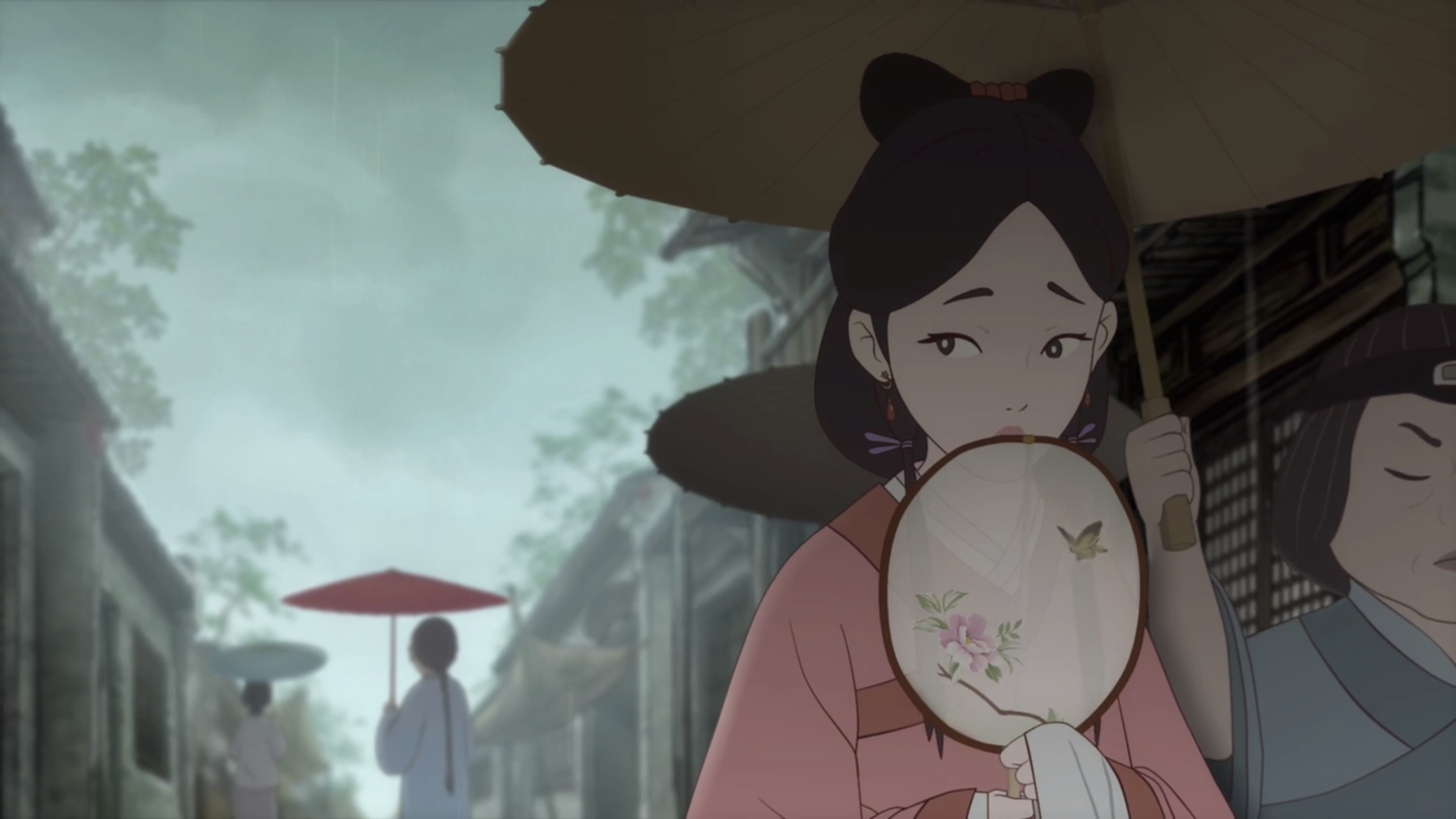
A screenshot of "Love Seeds by Choir of Chinese Poems".
A screenshot of "Love Seeds by Choir of Chinese Poems".
Editor's note: Pan Jian is director, professor and doctoral supervisor at the Film and Television and Animation Game Research Center of Zhejiang University. The article reflects the author's opinions, and not necessarily the views of CGTN.
The 16th China International Cartoon and Animation Festival (CICAF) kicked off on Tuesday, drawing a number of anime professionals and fans to discuss the development of China's animation in post-pandemic era.
Infantilization is a long-existing phenomenon in the Chinese animation industry for decades. But when it comes to the problems, the key to solving them otherwise lies in how we understand it.
In general, there are two primary misunderstandings related to infantilization in the Chinese anime.
The only way out
To infantilize refers to animation creators and producers who infantilize their business to target on only younger audiences. This is understandable that almost every child loves comic and cartoons, which could inspire children's imaginations, creativity, in turn help them cultivate aesthetics apprehension and values of the world.
According to some statistics, more than 70 percent of the audiences of the animated film "Monkey King: Hero Is Back", which grossed nearly one billion yuan (about 153 million U.S. dollars) and topped China's animation box office in 2015, are adults from 18 to 39 years old. The audiences of "Ne Zha", another domestic anime film making a hit last summer, were also constituted by young adults. Besides, "The Legend of Qin", an animation series with growing popularity on the internet is said to have over 15 million core fans almost made up by collage students and white-color workers.
Thus, young children should not be the only group of the targeting. Animation belongs to all ages which now equal the live-action works in the television and film sector. That is to say, animated movies are not in contrast with the adulthood movies. As a matter of fact, not only children but also a huge number of adults are fascinated by animations.
Therefore, if only aimed at young children, China's animation industry will limit its capacity to develop and largely shrinking its benefits, as a result constraining its artistic influence and cultural appeal worldwide.
Thanks to the advent of internet and social progress, internet and cinema animated works are no longer solely aimed at kids. But television still remains the largest platform for kid-orientated animations, which are taking more than 90 percent of all anime production.
On television, only channels for children are permitted to broadcast cartoons, i.e. golden eagle, KaKu, which are positioned as children's cartoon content providers. All these indicate that as traditional mainstream category, television animation is still trapped in the misunderstandings of infantilization, seeing children as their only audience. As a result, it's always hard for TV animation to thrive.

A poster for Chinese animated film "Ne Zha." /Xinhua
A poster for Chinese animated film "Ne Zha." /Xinhua
Infantilization followed by inferior quality
This is more worrying that most home produced animations are found to be of inferior quality because of its appeal to younger-aged audience. The producers tend to believe that animations are only for children, thus so long as it is positive, educational, no matter how far-fetched the story is and how poorly made, there wouldn't be any problem.
In fact, it requires more artistic devotions to create animations for kids. Children's capability of aesthetics must not be underestimated nor ignored. Given that animations always imposed an enormous impact on children's mind, emotions and heart, animated works of superior quality can help children grow into better person while inferior quality ones might hurt or even destroy them.
That is why the world renowned animation series "Teletubbies," "Miffy Bunny" focus on artistic expression but also make sure that every detail, every frame and even colors are beneficial to children's mental and physical health based on special researches on children's physiology and psychology.
Thus, we could conclude that excellent animated works for kids are also fascinating to adults, which enable them to recall their childhood memories, immersed and relaxed in warm comfort and childish joy. Animated works like these have appeals to all ages.
In a nutshell, animation does not mean to infantilize and should not be hindered by infantilization. What matters in fact is how should the infantilization be understood and treated. Only by overcoming this decades-long preconception towards animation, will the Chinese animation make breakthrough and flourish.
(If you want to contribute and have specific expertise, please contact us at opinions@cgtn.com.)